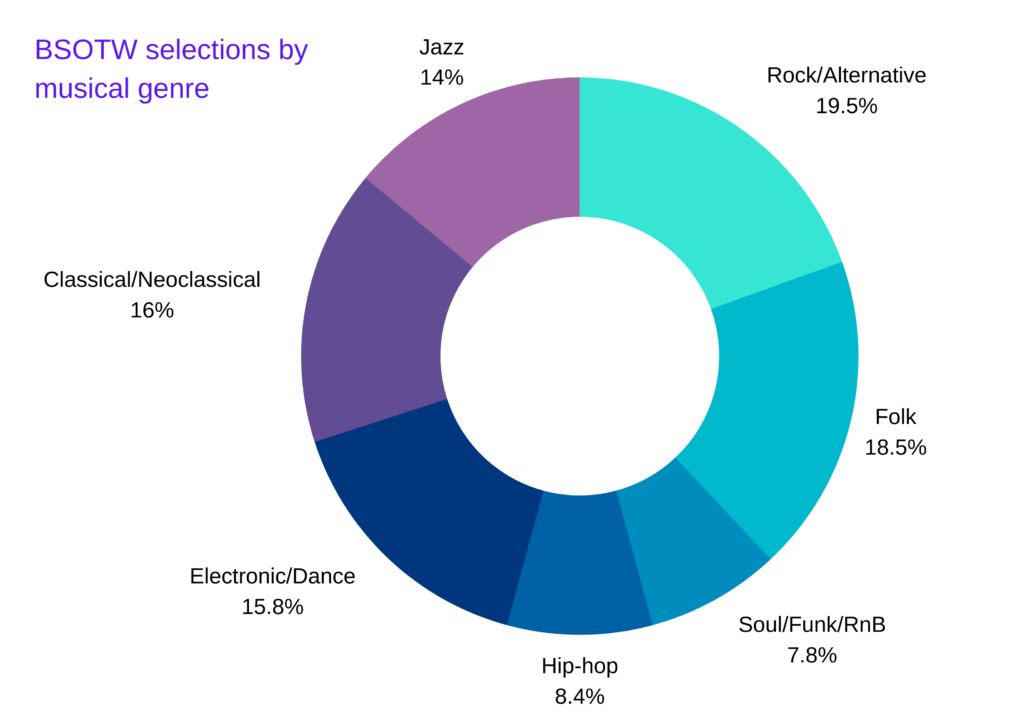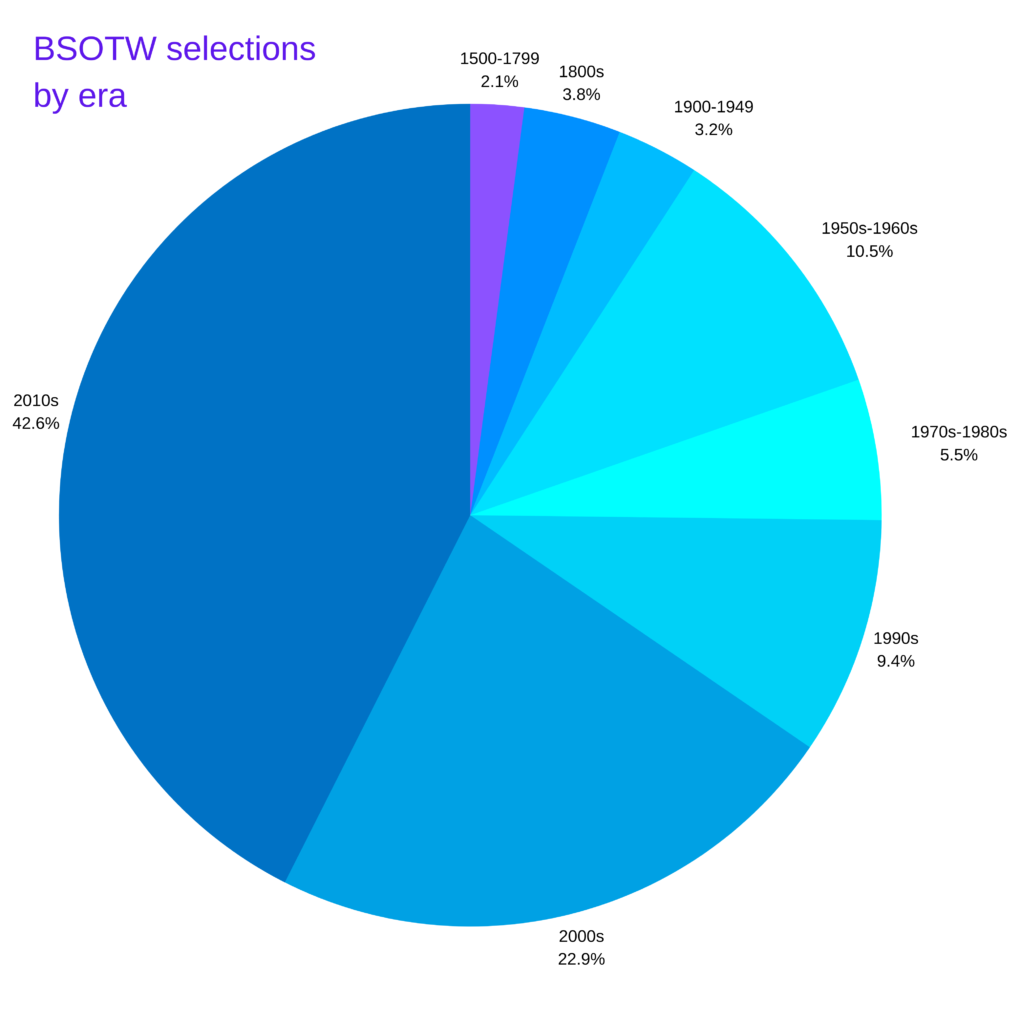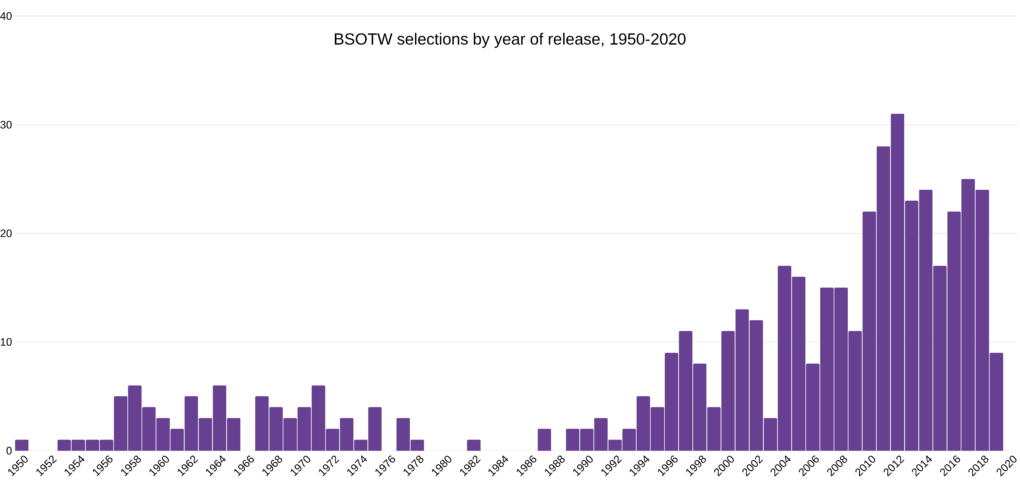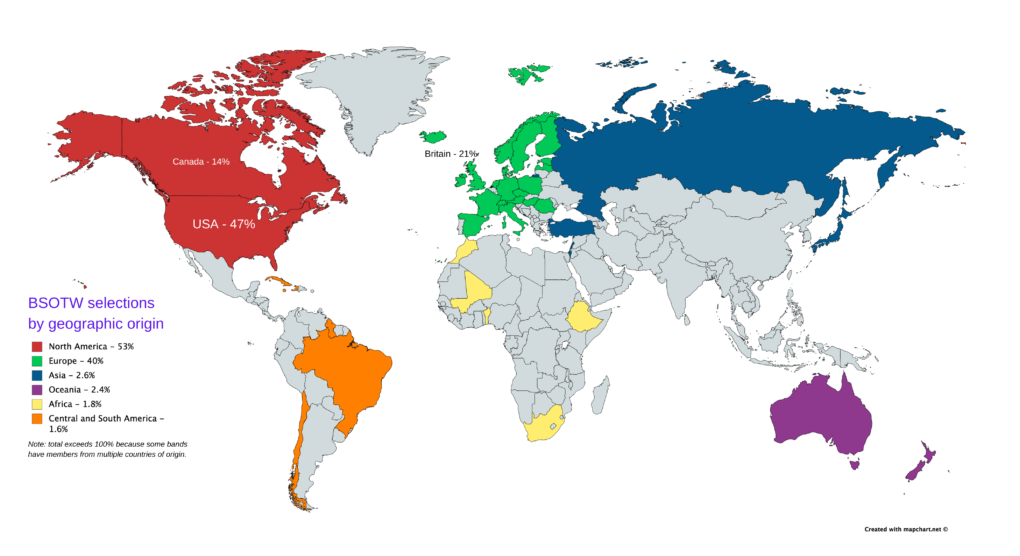
10 years ago this week, Beautiful Song of the Week began.
I already did a bit of a retrospective when we hit week 500, so I’m not going to bore you with more nostalgia, I promise. Instead, I’ll bore you with a bit of data.
Charts are fun, and 521 songs make for a reasonably large data set, so I put some numbers into my number crunching machine, and came up with the following graphs that do a pretty good job of visualizing the music I’ve been sharing with you over the past decade.
Part of the gimmick mission of this blog has always been the noble slogan of “any song, any genre, any era.” So let’s see how we’re doing with that.

Looks like the genres are pretty diverse around here, which I’m happy with. If you’re a country music fan, I apologize. If we stretch the definition of “country music,” there are a few posts you might like, but I’ve had a hard time with that genre. Let’s move on and take a look at this blog from a time period point of view:

Okay, so there’s a bit of recency bias happening. But in my defense, I get sent lots of material by labels and PR companies who have new music to promote. Discovering new artists has become a bit of a side-quest, and a worthwhile one, I think. Still, it’s a bit sad that the entirety of music history up until 1949 is represented in less than 10% of my selections.
Now, let’s get rid of all the pre-1950 music and look at how many songs I’ve featured that have been released since then, year by year:

A few things to note here. First, I’m happy that the 1960s and 1970s are nicely represented. But then, there appears to be a significant lack of beautiful music from about the mid-1970s until the early 1990s. I tried to explain this in a post about U2 a few years ago, and I’ve tried to be more open to “beautiful” 80s music…but it’s really hard to do.
Also: what happened to 2003? The 2000s make up nearly a quarter of the total songs on this list, and yet 2003’s total dips way below the average; even lower than 1999, commonly referred to as the worst year in music.
Alright, one more graphic: a look at the origin countries of the artists/composers/performers whose music has appeared on this blog.

With 40 countries accounted for, we’re doing okay here too, but it was a bit shocking for me to realize that three countries – the US, Britain, and Canada – make up 82% of the total. Add in the rest of Europe and we’re up to 93%. Yikes. And I even cheated a bit by counting Russia and Turkey as Asian countries.
I’d like to think that these numbers aren’t so much a result of my own bias, but more about the heavy American influence on popular culture over the last century. Still, I feel a bit silly that China and India, home to 37% of the world’s population, are at 0% on this list.
Guess I’ve got some homework to do over the next 10 years.
What makes this a beautiful song:
1. A blend of genres. FKJ’s music hovers effortlessly over genre tags like electronic, soul, hip-hop, and nu-jazz. Elements of all the above are evident in this track.
2. A blend of eras. The instrumentation – thoughtfully sparse, with quirky vocal pitch-shifting and dry percussion – is very ‘now’…but the jazzy piano and stunningly beautiful sax solo are echoes from another time. And yet, the effect on the sax (some kind of harmonizer, similar to what James Blake often uses on his voice) thoroughly modernizes it.
3. A blend of geography. FKJ stands for “French Kiwi Juice,” which sounds both delicious and multi-national. The musician’s real name is Vincent Fenton, and he is indeed French, but he recorded this EP in a southeast Asian rainforest; a place so remote that there was no electricity; he had to run a generator to power his equipment.
A genre-blurring French musician, singing in English, recording in southeast Asia, under a stage name that alludes to kiwi fruit. Not a bad way to sum up a decade of music blogging.
Recommended listening activity:
Carefully slicing a pie into evenly-sized pieces, and then eating them all.